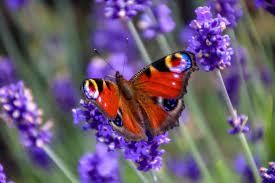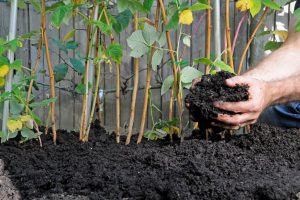
When it comes to landscaping in Florida, choosing the right trees is a crucial decision. Small trees can add charm, shade, and aesthetic appeal to your outdoor space, but with the diverse climate of the Sunshine State, it’s essential to pick varieties that thrive in Florida’s unique conditions. In this guide, we’ll explore the factors to consider and some fantastic small trees for Florida that are well-suited for the Florida environment.
Understanding Florida’s Climate

Florida is known for its warm, humid, and rainy climate, which falls in the tropical and subtropical category. The state is also vulnerable to severe weather conditions such as hurricanes and tropical storms. Therefore, it is essential to carefully select small trees that can withstand these challenging conditions and also offer resistance to pests and diseases that are prevalent in this area. Choosing the right tree species that can endure the climatic and environmental stressors is crucial for their survival and optimal growth in Florida.
Choose Small Trees for Florida
To help you navigate this delightful jungle, here are some key factors to consider:
1. Space & Location
- Mature size: Be mindful of the tree’s full-grown height and spread. Small doesn’t always mean tiny! Consider if it fits your available space without encroaching on power lines, buildings, or walkways.
- Sunlight and soil: Does your chosen spot get full sun, partial shade, or mostly shade? Match the tree’s light requirements to its future home. Also, think about soil drainage and acidity – some trees prefer sandy soil, while others thrive in richer, well-draining soil.
2. Function & Aesthetics
- Desired purpose: Are you looking for shade, privacy, vibrant blooms, or fragrant flowers? Choose a tree that complements your needs and desired aesthetics.
- Seasonal effects: Do you prefer evergreen trees for year-round foliage, or do you enjoy the beauty of changing leaves in fall?
- Salt tolerance: If you live near the coast, opt for salt-tolerant trees like sea grapes or cabbage palms.
3. Additional considerations
- Growth rate: Do you want a tree that fills the space quickly, or are you patient with slower growers?
- Maintenance needs: Some trees require minimal pruning, while others need regular shaping. Choose a tree that fits your gardening style.
- Pest and disease resistance: Opt for trees known for their resilience to common Florida pests and diseases.
Factors to Consider When Choosing Small Trees
1. Climate Compatibility:
Consider the USDA hardiness zone of your specific region in Florida. Different areas may experience slight variations in temperature and humidity, impacting the suitability of certain tree species.
2. Soil Quality:
Florida’s soil can range from sandy to clayey. Ensure the tree you choose can adapt to the soil type prevalent in your location. Good drainage is particularly important to prevent waterlogged roots.
3. Sun Exposure:
Evaluate the sunlight levels in your yard. Some trees thrive in full sun, while others prefer partial shade. Understanding your landscape’s sun exposure helps you select trees that will flourish in your specific conditions.
4. Size and Growth Rate:
Small trees come in various sizes, so consider the available space and how quickly you want your trees to reach maturity. Some trees are slow-growing, making them ideal for smaller yards.
5. Watering Needs:
Florida experiences both wet and dry seasons. Choose trees that can tolerate fluctuations in water availability. Drought-resistant varieties are particularly valuable during dry spells.
6. Aesthetic Appeal:
Beyond practical considerations, think about the visual impact you want. Choose trees with attractive foliage, flowers, or bark to enhance the overall beauty of your landscape.
Top Picks for Small Trees in Florida

1. Crape Myrtle (Lagerstroemia spp.):
Known for their vibrant flowers, crape myrtles are well-suited for Florida’s climate. They come in various sizes, making them versatile for different landscapes.
2. Dwarf Tabebuia (Tabebuia spp.):
These small-sized trees produce stunning trumpet-shaped flowers and are well-adapted to Florida’s tropical climate.
3. Japanese Blueberry (Elaeocarpus decipiens):
Ideal for smaller yards, Japanese blueberries feature glossy foliage and are relatively low-maintenance.
4. Sweet Bay (Magnolia virginiana):
With aromatic leaves and a compact size, sweet bays thrive in Florida and bring a touch of elegance to any yard.
5. Yaupon Holly (Ilex vomitoria):
A native Florida plant, yaupon holly is drought-tolerant and provides year-round interest with its small, evergreen leaves.
Frequently Asked Questions (FAQs)
Q1: Can I plant small trees in Florida all year round?
A1: Yes, Florida’s climate allows for year-round tree planting. However, planting during the wet season can provide the trees with ample moisture for establishment.
Q2: How often should I water my small trees in Florida?
A2: Watering frequency depends on the specific tree and soil conditions. Generally, it’s advisable to water deeply and less frequently, allowing the soil to dry between watering.
Q3: Are there any native small trees in Florida?
A3: Yes, several native trees, such as the Yaupon Holly and Simpson’s Stopper, are well-suited for Florida landscapes.
Q4: Do small trees attract pests in Florida?
A4: While some pests may affect trees, choosing species adapted to Florida’s conditions and practicing proper care can help minimize pest issues.
Q5: How can I protect my small trees during hurricanes?
A5: Prune trees regularly to remove weak or dead branches, and stake newly planted trees for added stability. Mulching around the base can also help protect roots.
In Conclusion
Choosing small trees for Florida landscape involves thoughtful consideration of climate, soil, and aesthetics. With the right selection, you can enhance the beauty of your outdoor space while ensuring your trees thrive in the Sunshine State’s unique conditions. Whether you opt for the vibrant crape myrtle or the elegant sweet bay, a well-chosen small tree can be a lasting asset to your Florida home, and when considering your landscape, understanding how to identify Florida grass is equally crucial for maintaining a lush and thriving garden.





